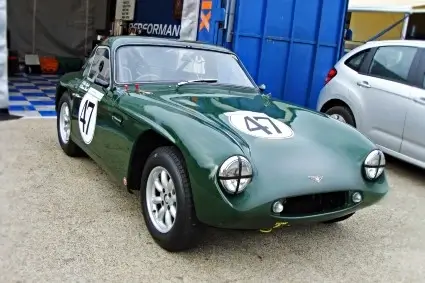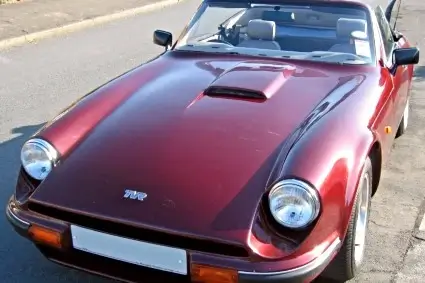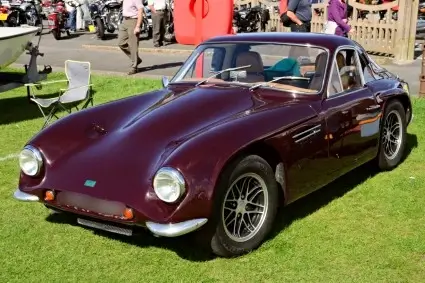TVR Tyres
Classic TVR Tyres
On the following pages, Longstone Classic Tyres give classic tyre fitment recommendations for TVR cars.
01302 711 123
or
Email: sales@longstonetyres.co.uk
Vintage TVR Tyres
Longstone Tyres can provide tyres for across the whole beautiful TVR range, from the Grantura to the Vixen.
TVR Tyres
The following list are our recommendations for TVRs:
- 165-15 Michelin XAS for a TVR Grantura, TVR Vixen, TVR Tuscan, 2500M & 3000M Pre-1975.
- 185 HR 14 Michelin MXV-P for a 1600M, 3000M & TVR Taimar.
- 205/70VR14 Michelin XWX for a TVR Turbo.
- 18/60 - 15 (215/55 R 15) Michelin TB15 for a TVR S, 350i, 390, 420 & 400 SE.
TVR History
The brand was founded in Blackpool, in a wheelwright's workshop, by Trevor Wilkinson, who started Trevcar Motors to do general engineering work, which later evolved into TVR Engineering. The first TVR chassis was built in 1949, featuring a live rear axle from a Morris Eight and independent trailing arm front suspension. The body was composed of aluminium and was powered by an ancient 1,172 cc Ford side-valve engine with 35 horsepower.
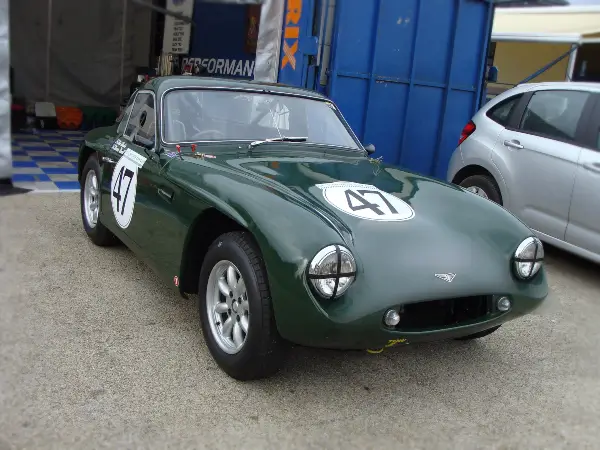
Wilkinson and his colleague Jack Pickard built the TVR Sports Saloon in 1953, based on the parts of an Austin A40, to be sold as a kit to consumers. There were several body types and engines employed, and no two Sports Saloons were alike. In 1955, a semi-spaceframe chassis with a lower sitting position and all-around independent suspension was devised. The TVR Open Sports and TVR Coupe followed, but in 1958, at the suggestion of Ray Saidel, who was racing and trying to market the cars in the US, a design was created, which later became known as the Grantura.
However, due to financial issues and relationship breakdowns, new management, new investors, and fresh methods were introduced to the TVR script. Trevor Wilkinson's controlling stake was transferred to Keith Aitchison and Bryan Hopton in 1960, who managed to boost the order book. Trevor Wilkinson's notion of a light body on a tubular chassis, a front-engine, and rear-wheel drive, with special emphasis on performance, established TVR's Identity which remains to this day.
An engineering degree led to Martin Lilley building Lotus Elan kits to order in the early 1960s, but it was a visit to a TVR shop that first introduced him to TVRs. He then purchased a Griffith 400 for racing. After causing enough damage to the automobile to compel it to be returned to the manufacturer for repairs, and with his father Arthur Lilley having recently purchased some shares in Grantura Engineering, the firm quickly went out of business! Martin Lilley and his father decided not to abandon the automobile or the investment and bought the ruins of Grantura Engineering in November 1965, renamed it TVR Engineering, and transformed it into a profitable firm within three years.
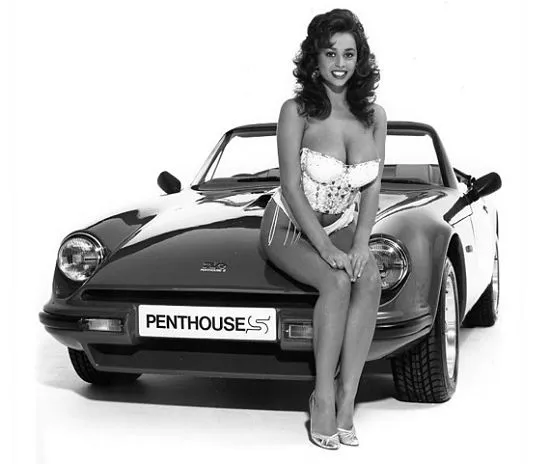
Following two years of dwindling production volume for the current range, the Vixen was introduced in 1967 with the Tuscan V8, which had been created to replace the Griffith. The business transferred to Bristol Avenue took place in late 1970, and the extra space was much required because output had now increased to between five and eight automobiles per week. To generate exposure for the brand, naked models stood on the TVR stands at Earls Court during the 1970 and 1971 British International Motor Shows, causing quite a stir!
In 1972 after the Vixen series, TVR introduced the M series, which was followed by the Taimar and S series. In early 1975, a fire at the plant severely halted production, and while the loyal TVR team worked tirelessly to restore production, the fire had a significant impact on industrial productivity. The Tasmin, with a significant shift in style, was released in 1980 to poor reviews and low sales. For many years, American exports had played a key part in TVR's profitability, but with prices rising, increased emission rules, and an economic depression in the UK, Martin Lillley found TVR in financial problems again, and in late 1981, he surrendered control of the firm to Peter Wheeler.
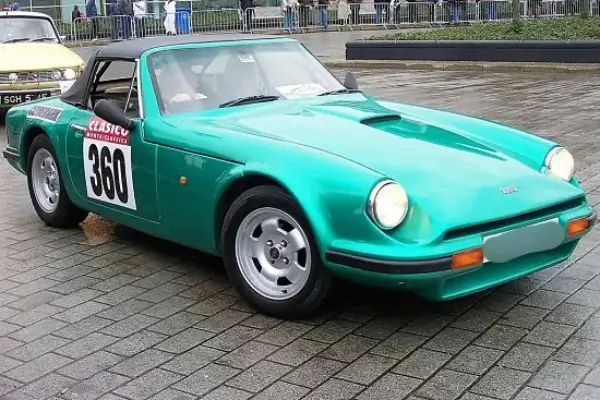
Peter Wheeler was a chemical engineer and businessman who made a fortune serving the oil industry. He also owned a TVR Taimar Turbo. Because of his solid connection with the plant, Peter Wheeler was able to take control of TVR from Martin Lilley when the company ran into financial difficulties. Taking over the unconventional Tasmin design, the next step was to shoehorn in the Rover V8, which transformed the Tasmin into the successful 350i, with several varieties of Wedges, as these vehicles became known, to follow. Recognizing that the TVR series lacked curves, the S Series was developed with clear design linkages back to the M Series but with few components carried over. The S Series was a big hit and sold a lot of units.
TVR resurrected the Tuscan name by launching a thrilling one-make race series in which Peter Wheeler participated. Another resurrected name, the Griffith, was featured on a TVR in 1990, and it is widely regarded as one of Peter Wheeler's greatest designs. Within a year, the Chimaera arrived and quickly became TVR's bestseller. The Rover V8 engines used in the Griffith and Chimaeras began with a capacity of 4.0 litres and subsequently increased to 5.0 litres, offering amazing performance. TVR has developed a wide range of famous automobiles that are as popular today as they were when they were initially manufactured under Peter Wheeler's leadership, but the firm was sold to Nicolai Smolenski after 22 years at the helm.

